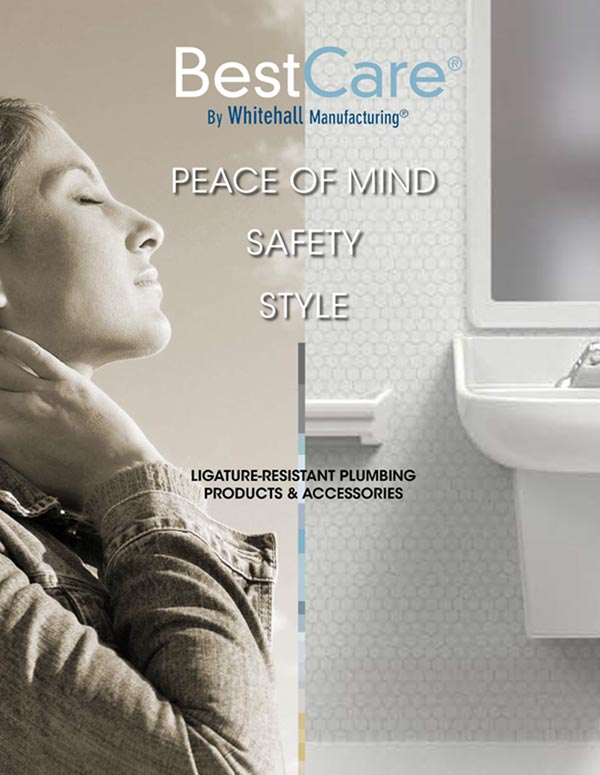
This post was originally published June 4, 2016, and has been updated with the most recent information.
The use of ligature-resistant products in behavioral healthcare is evident.
However, should hospitals, emergency care facilities, and rehabilitation or nursing homes be considering them, as well?
Absolutely. Healthcare is shifting toward a new trend called universal design. Also called inclusive design, it accommodates everyone regardless of his or her age, ability, or mental state. The benefits are substantial and range from aesthetics to financial considerations, but most importantly, they all center on the patient’s experience and quality of care.
Risk to Funding
Healthcare providers want to create a safe environment, but retrofitting a facility is often very costly. Today, institutions are faced with the possibility of losing funding if they do not meet certain standards, which can be far more expensive than the retrofit itself.
On December 3, 2014, Brittney Bennetts, a patient at Timberlawn Mental Health System in Dallas, hanged herself from a closet doorknob using a torn bed sheet. Timberlawn found they were faced with the possibility of losing up to $20M in funding and even closure.
To eliminate tragedies such as the one at Timberlawn, various codes, standards, and guidelines have been created. They may vary somewhat from state to state and among different funding organizations, but the result is the same: Healthcare facilities must comply or risk losing their funding.
Universal Design Provides Flexibility
Healthcare facilities commonly have a few ADA-compliant, bariatric, and behavioral healthcare rooms available. But what if those rooms are already occupied when a patient with special needs is admitted? Should rooms be left empty just in case?
Universal design solves the problem of space constraints. All rooms are built to accommodate all patients so facilities are always prepared.
We recently received a special request from a doctor on behalf of one of his patients. An autistic young man had recently harmed himself when he repeatedly kicked the porcelain toilet in his bathroom, causing it to shatter. Broken vitreous china is as sharp and dangerous as glass, but his parents were fortunately able to reach him quickly and prevent serious injury. Never in a million years did they imagine something as simple as a toilet could become a danger to their son. Understandably concerned that it could happen again, we were able to ease the family’s worries by donating a stainless steel ligature-resistant toilet.
If this young man had walked into your hospital and required a room, where would you have put him? Could he have gone into any room, or would special accommodations have been needed? And would those accommodations have been available?
Universal Design Removes Stigmas
It is widely known that environment plays a significant role in the health and recovery of patients. Eliminating stigma is the first step in creating a more restorative space that aids the healing process.
New patients have enough on their minds without being placed in a room that has been outfitted for their specific need. Universal design avoids this by making all rooms the same, equally suitable—whether bariatric, wheelchair accessible, or ligature resistant—no matter the type of patient.
Products today are designed to meet these requirements without compromising on aesthetics. Patients will likely not even notice that their shower valve, faucet, and sink are ADA-compliant and ligature-resistant—only that they help create a pleasing environment.

New Year, New Look!
The BestCare® Dignity Suite
You asked for it, we made it: Every fixture and accessory you could possibly want in a bathroom made ligature-resistant.
From the shower head to the floor drain, we can provide patients a comfortable, safe environment while maintaining their dignity as they seek treatment.
Note: BestCare products are designed to decrease the probability that they may be utilized as an apparatus for ligature. It is not a replacement for professionals who are trained in the proper evaluation, management, and supervision of persons at risk of suicide.
